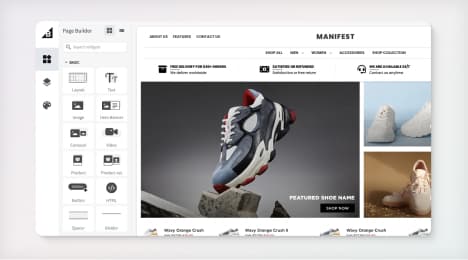
Watch Our Product Tour
See how BigCommerce helps you build and manage your online store with ease.
- Ecommerce Insights

6 Key Steps to Launch Your Online Store
Explore our Launch Foundations series to get your BigCommerce store up and running quickly.
BigCommerce helps growing businesses, enterprise brands, and everything in-between sell more online.
How does a search engine work?
While you should always create website content geared to your customers rather than search engines, it is important to understand how a search engine works. Once you know this, you can move on to the next step, which is incorporating the elements that the search engine is looking for.
How do search engines work?
Most search engines build an index based on crawling, which is the process through which engines like Google, Yahoo and others find new pages to index. Mechanisms known as bots or spiders crawl the Web looking for new pages (1). The bots typically start with a list of website URLs determined from previous crawls. When they detects new links on these pages, through tags like HREF and SRC, they add these to the list of sites to index. Then, search engines use their algorithms to provide you with a ranked list from their index of what pages you should be most interested in based on the search terms you used.
Then, the engine will return a list of Web results ranked using its specific algorithm. On Google, other elements like personalized and universal results may also change your page ranking. In personalized results, the search engine utilizes additional information it knows about the user to return results that are directly catered to their interests. Universal search results combine video, images and Google news to create a bigger picture result, which can mean greater competition from other websites for the same keywords.
Here are the top elements to edit when designing your store for SEO:
Architecture- Make websites that search engines can crawl easily. This includes several elements, like how the content is organized and categorized and how individual websites link to one another. An XML sitemap can allow you to give a list of URLs to search engines for crawling and indexing. (2)
Content - Great content is one the most important elements for SEO because it tells search engines that your website is relevant. This goes beyond just keywords to writing engaging content your customers will be interested in on a frequent basis.
Links - When a lot of people link to a certain site, that alerts search engines that this particular website is an authority, which makes its rank increase. This includes links from social media sources. When your site links to other reputable platforms, search engines are more likely to rate your content as quality also.
Keywords- The keywords you use are one of the primary methods search engines use to rank you. Using carefully selected keywords can help the right customers find you. If you run a jewelry store but never mention the word "jewelry," "necklace," or "bracelet," Google's algorithm may not consider you an expert on the topic.
Title descriptions - While it may not show up on the website, search engines do pay attention to the title tag in your site's html code, the words between < title > < /title >, because it likely describes what the website is about, like the title of a book or a newspaper headline.
Page content - Don't bury important information inside Flash and media elements like video. Search engines can't see images and video or crawl through content in Flash and Java plugins.
Internal links - Including internal links helps search engines crawl your website more effectively, but also boosts what many SEO professionals refer to as "link juice." In other words, it has the same benefit of any link to your site: It demonstrates the value of your content.
BigCommerce helps growing businesses, enterprise brands, and everything in-between sell more online.
Start growing your ecommerce business even faster.
High-volume or established business? Request a demo